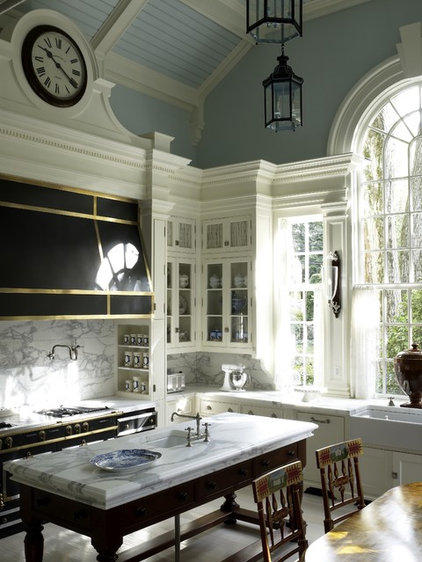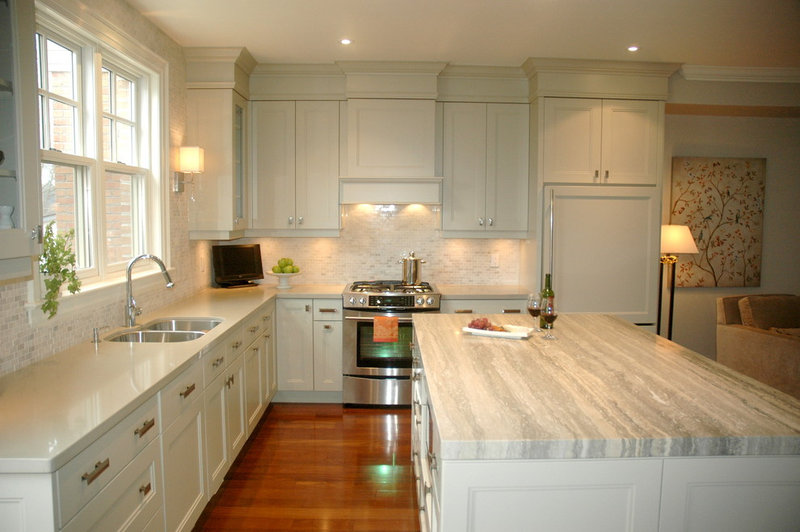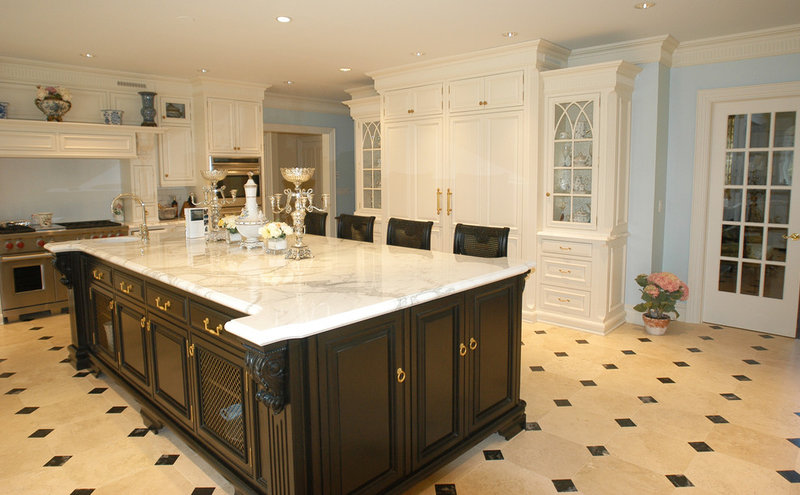Moldings are detailed design accents, so some types can be expensive. They’re usually priced by the linear foot and, since most are available in 8-foot lengths, it’s easy for the cost to add up. One rule of thumb: The more elaborate the design, the more expensive it usually is.
To pull off this look, you may want professional help. The placement of each piece of molding needs to be precisely calculated, and the end of the molding needs to butt up against an adjacent wall or cabinet. It may sound easy, but it definitely isn’t!
It is important to know that additional molding means an additional expense. Looking to save money? Try interior moldings made out of foam or a similar material.
Decorative molding on open shelving not only adds a new design feature, but it can also add a structural element. Some shelving, depending on the span (anything over 36 inches) can bow from weight if it isn’t supported correctly. Applying an edge molding to the outside edge of the shelf can prevent sagging.
Should you have to install new flooring in your kitchen without removing the base cabinetry, shoe molding can help hide any installation imperfections by camouflaging cut edges.
The most common area in the kitchen for applied molding is the surround for the range hood. This area is often a focal point, so it demands attention to detail. Molding is usually added to coordinate or match with the door style or surrounding motifs. Although it seems like a small detail, applied molding creates balance and cohesion.











